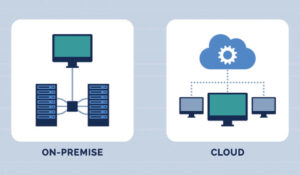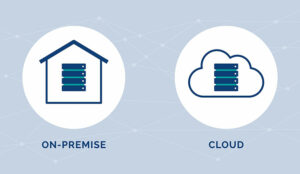Taylor Johnson of Talkdesk promotes the use of cloud contact centre technology and discusses its impact on the overall customer experience.
The rise of the cloud has spurred remarkable transformation across nearly every industry. Contact centres, oftentimes considered archaic, slow-moving and inflexible, are transitioning to a cloud-based model that enables them to become nimble, scalable and innovative.
This transformation seems attractive to contact centre professionals as it enables them to accomplish much more than they would traditionally with a typical on-premises solution at a fraction of the cost.
Nancy Jamison, Principal Analyst at Frost & Sullivan, dives into why it’s important to understand how the cloud came to be, where it’s headed and how to identify what a true cloud solution really is.
All Clouds Are Not Created Equal
It’s critical to keep in mind the type of cloud a vendor is touting when evaluating the capabilities of your contact centre.
Many vendors that started in an on-premises world are simply building code on top of their legacy systems to make their contact centre offering look like a true cloud solution on the outside, with the nuts and bolts of a legacy system on the inside.
Even if a vendor is considered a true cloud solution, it could still be at its core a legacy, first-generation cloud built on a cluster-based architecture, leaving significant gaps in key requirements such as reliability and scalability.
Meteoric Rise to the Cloud
The cloud has been around for decades, going back to the 1960s and before, when hosting on IBM mainframes was common and with the emergence of business application-hosting service providers.
However, hosted or pure cloud deployments weren’t commonly seen until the arrival of CRMs and ERP systems such as Salesforce in the early 2000s. Since then, the cloud has picked up significant speed.
In 2017, the hosted/cloud market grew by 12.7% to $2.47 billion1, and that market is forecast to grow 11.4% from 2017 to 2022.
ACD, in other words, the contact centre market, is forecast to grow 16.8% during this same period. “We didn’t think it would take off quite so fast,” says Jamison.
What’s Behind the Rise?
Frost & Sullivan used customer research surveys to identify the top end-user priorities for hosted/cloud contact centre solutions in 2017 and identified trends that contributed to the rapid rise of the cloud. The top three “critical” priorities were:
1. Fast Deployment (48.4%)
Fast deployments are critical for businesses responding to fast-changing customer expectations. On-premises, legacy systems can take months and even years, depending on the deployment size, to fully get up and running. With cloud-native solutions, deployment can happen in as little as a few weeks.
2. Ease of Use (46.9%)
Ease of use isn’t just about having an attractive interface. Contact centre leaders can boost employee productivity and operational efficiency by providing a solution that doesn’t require countless hours spent with IT. Changes can be made on the fly and new capabilities can be leveraged all with a few clicks.
3. Storing Large Amounts of Data (45.8%)
As additional capabilities are added to the contact centre, such as advanced analytics, more data will be required to be stored to connect all the relevant dots together.
Cloud contact centres provide the critical agility needed to keep up with rapidly evolving customer expectations.
By being able to quickly deploy in any type of environment, easily make changes on the fly using clicks, not code, and store large amounts of important contact data, contact centre leaders have recognised the benefits the cloud brings to their organisations.
Trends Impacting Customer Care and How the Cloud Can Help
Customer experience expectations have been moulded largely in part by disruptive technologies and innovative new business models.
While these expectations vary, trends such as relying on more self-service channels are on the rise across all demographics Frost & Sullivan researched. However, contact centres still play a vital role in the customer journey.
When self-service fails, customers often pick up the phone to speak with a live agent. This adds additional complexities for agents who are receiving these calls, as they frequently don’t have insight into the other channels customers have interacted with. “You can’t sit back with the same old channels,” says Jamison.
Self-service channels are only as good as the content customers have at their fingertips. By infusing AI into these channels, contact centres can proactively offer content that fits the context of the customer’s request.
Jamison says that contact centres should be focusing on “maturing technologies” rather than “emerging technologies” when pursuing an AI-infused self-service model. These maturing technologies include tools such as AI, machine learning, speech technologies, big data and cognitive learning.
Introducing newer technologies, such as chatbots and virtual assistants, can help supplement a strong AI-infused self-service strategy.
Another trend that’s developing in innovative contact centres is workforce engagement management (WEM).
According to Jamison, this is a natural evolution of traditional workforce optimisation, which was initially focused on optimising contact centre resources to better serve the customer and and improve the bottom line of the company, rather than the agent. WEM takes aim at who the customer encounters on the front lines: the agent.
Happy employees, as research has clearly discovered, mean happy customers. For example, by focusing on the agent, WEM encourages the creation of flexible schedules for what’s rapidly becoming a younger, more mobile workforce.
WEM also focuses on introducing new applications to the contact centre. “Robotic process automation is having a pretty big impact,” says Jamison. RPA automates rules-based processes that are repetitive and time-consuming in nature and can be prone to error, such as filling out forms or updating databases.
By mimicking agent tasks, RPA improves quality consistency and efficiency. RPA can perform unattended work in the background or work alongside agents providing guided assistance as part of a popup desktop application, according to Jamison.
Finally, gamification is a component to WEM that has gathered significant steam recently. It aligns agent and manager activity to overall company objectives, all while addressing the core motivational needs of agents, such as compensation and opportunity for more flexible schedules.
Gamification also satisfies the personal needs of most agents by creating an environment where they feel they are part of a cohesive team and are unitedly striving toward accomplishing collective goals and missions.
Things to Ask Yourself
As mentioned previously, there are a plethora of contact centre vendors in the market that claim to have true cloud solutions.
The questions below are meant to help you gauge whether or not these solutions are truly cloud-native or if they’re legacy contact centres that are disguised as cloud.
- Is the vendor solution 100% cloud-based with applications that are natively written for the cloud?
- How easy is it for this cloud contact centre to integrate with existing systems, and, more importantly, future systems you may want or need to adopt?
- How much experience does the vendor have in the cloud?
- Does the vendor have an uptime guarantee, and if so, how do they measure uptime?
- Will any system upgrades affect performance?
- Does the system scale?
- How easily can you do tasks such as adding on agents, adding applications, changing routing and obtaining new numbers?
If a vendor can meet these requirements, it’s worth taking the conversation a step further. Doing so will bring you one step closer to revolutionising your customer experience and giving your company a clear competitive advantage.
Author: Robyn Coppell
Published On: 11th Jun 2019
Read more about - Guest Blogs, Talkdesk









































